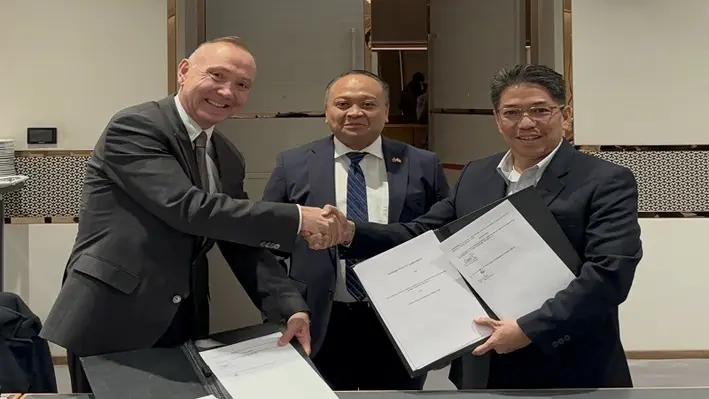
 Pertamina Geothermal Energy (PGE), an Indonesia-based company, has signed a Memorandum of Confidentiality Agreement with Turkish energy company Kipaş Holding to start a cooperation for the utilisation of geothermal energy.
Pertamina Geothermal Energy (PGE), an Indonesia-based company, has signed a Memorandum of Confidentiality Agreement with Turkish energy company Kipaş Holding to start a cooperation for the utilisation of geothermal energy.
The Indonesian Embassy in Ankara facilitated PGE’s efforts to seek cooperation in geothermal exploration with various companies throughout Türkiye. PGE and Kipaş Holding are both interested in carrying our exploration projects cooperatively in both Türkiye and Indonesia, and are open to the possibility of a joint investments elsewhere.
The signing of the agreement was carried out by Julfi Hadi, President Director of PGE, and Mehmet Şişman, General manager of Kipaş Holding, witnessed by the Indonesian Ambassador to Türkiye, Achmad Rizal Purnama.
“We are happy to have met with Pertamina Geothermal Energy and hope that the cooperation will be fruitful with an exchange of information and experience for geothermal energy sector improvement in both Türkiye and Indonesia,” commented Şişman.
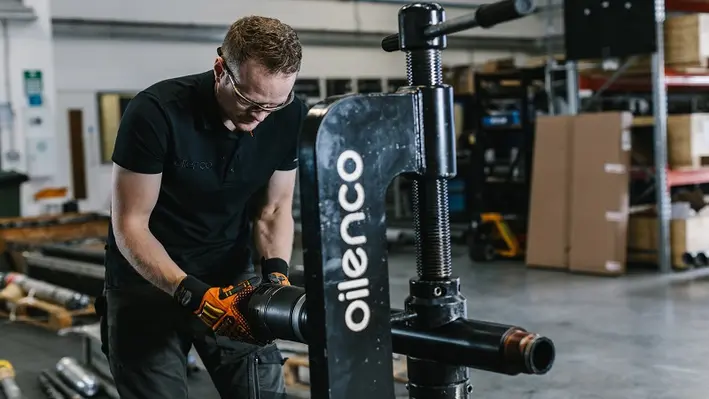
Oilenco Ltd has been awarded a contract for the provision of engineering and manufacturing services for a major North Sea operator.
The contract will see Oilenco provide well intervention and downhole equipment throughout a 52-well subsea plug and abandonment campaign, as well as its range of services including engineering, CNC machining, assembly, and maintenance services.
Blair McCombie, Operations Director at Oilenco, commented, “This contract award is an outstanding achievement for Oilenco. Not only does it demonstrate our capability to provide high-quality P&A solutions, but our clients will benefit from our breadth of knowledge and experience in this market.
“As Oilenco celebrates turning 15 this year, securing this contract and being part of this significant P&A campaign is a fantastic way to kick-start our celebrations.”
Oilenco has been providing P&A tooling solutions to the UKCS for more than six years, accounting for a significant growth area within the company through the provision of hybrid plugs, remote opening devices, and scale remedial solutions in its extensive fleet.
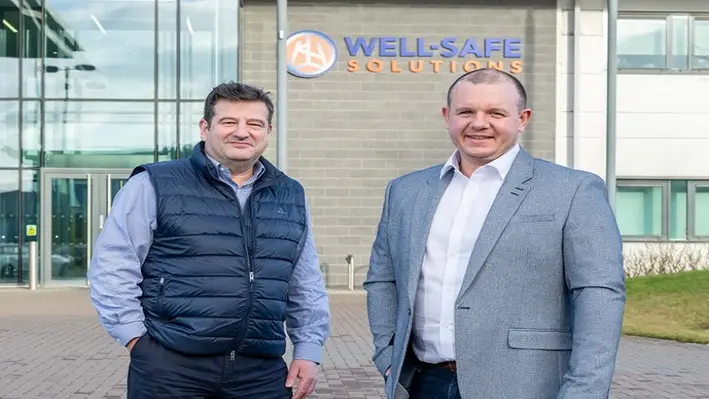
 As part of a North Sea project this year, subsea engineering company Interventek will be supplying a newly developed, compact and lightweight bore selector technology to decommissioning services provider, Well-Safe Solutions.
As part of a North Sea project this year, subsea engineering company Interventek will be supplying a newly developed, compact and lightweight bore selector technology to decommissioning services provider, Well-Safe Solutions.
Interventek will also provide life of tool support including training, services and critical spares.
Interventek’s CEO, Alan Duncan, explained, “This type of compact and lightweight technology is currently limited in market availability, so the provision of our new solution to tier one service companies will help to enhance industry efficiency and cost-competitiveness, particularly in the decommissioning sector. We’re delighted to have been selected by Well-Safe as a new equipment supplier and are dedicated to supporting them in delivering optimum results to operators.”
Steven Chalmers, Wells Subsea Manager at Well-Safe Solutions, said, “Well-Safe Solutions is committed to realising safe, smart and efficient well decommissioning operations. New technology plays a vital role in making operations as efficient as possible and Interventek’s Bore Selector will help to boost efficiency when deployed from the Well-Safe Guardian.”
The design of the bore selector supports the industry’s move towards more compact and lighter weight systems with improved deck handling and deployment efficiency. The tool’s function allows a monobore riser or riserless system to be used for intervention on a dual bore Xmas tree. This means that dual bore interventions can be carried out without returning the system to surface to realign the riser for annulus bore access, enabling access to a large number of wells in a shorter period of time, with increased operational efficiency. It is positioned between the tree running tool and the lower riser package and uses an actuated flapper which can be moved manually via a standard ROV interface or hydraulic surface controls. The flapper position directs the wireline toolstring into either the production bore or the annulus. A bi-directional ball valve is also integrated into the annulus access route to enable circulation of fluids during operations.
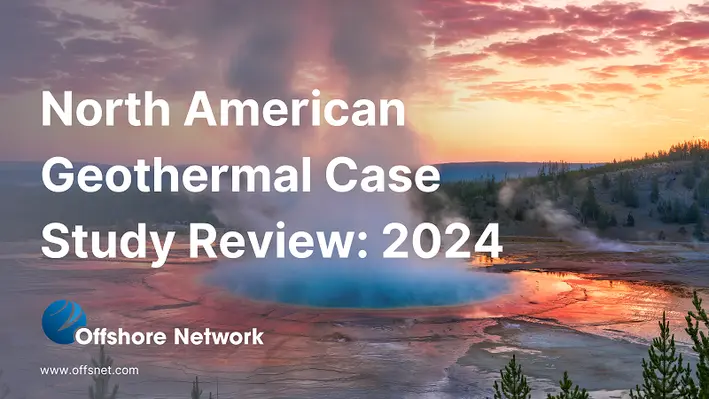
 As COP28 shone the spotlight onto the ambitious targets set by the Heads of State and Governments Global Renewables and Energy Efficiency Pledge, wherein 123 countries recognised their commitment to maintaining global warming levels to within 2°C, work is only just beginning throughout the world’s energy network to increase the pace and deployment of renewable sources.
As COP28 shone the spotlight onto the ambitious targets set by the Heads of State and Governments Global Renewables and Energy Efficiency Pledge, wherein 123 countries recognised their commitment to maintaining global warming levels to within 2°C, work is only just beginning throughout the world’s energy network to increase the pace and deployment of renewable sources.
Currently, geothermal energy only accounts for 0.5% of global renewable installed capacity according to the International Renewable Energy Agency, signifying that there is significant room to increase deployment. According to the International Geothermal Association (IGA) there are currently 2,500 active deep geothermal wells globally, boasting an installed capacity of 173GW for heating and cooling purposes. While China is leading the localised heating system charge, the EU, USA and APAC regions are hot on its heels, offering an abundance of potential for geothermal extraction.
From an electrical standpoint, IGA states that there are currently 3,700 active geothermal wells globally boasting an installed capacity of 16.3GW. The US is the global front runner, generating more geothermally-charged electric power than any other region in the world, with that figure only set to increase. In line with the COP28 Renewables Pledge, IGA has promised to triple geothermal output by 2030, bringing overall electric power capacity up to 48GW, and total geothermal generation for heating and cooling systems up to 520GW. North America will prove to be a key player in meeting this target, becoming a driving force in boosting production via pilot projects and new technologies.
Offshore Network’s bespoke 2024 Geothermal Case Study Review shines the spotlight over North America, highlighting a selection of game-changing projects and the companies behind them, including Fervo Energy, GreenFire Energy, Baker Hughes and C Thermal.
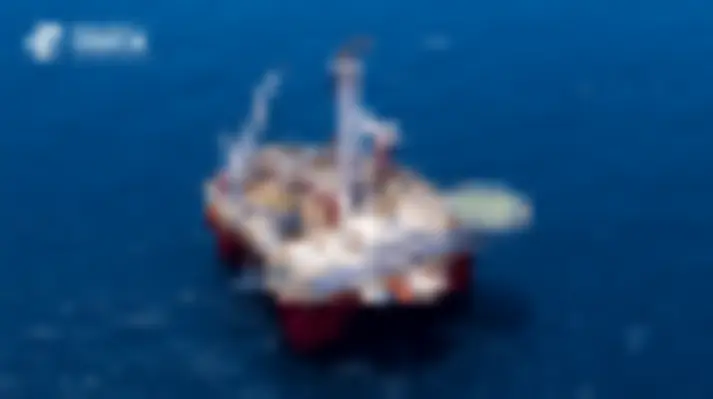

Cooper Energy Limited, an exploration and production company, has announced that the Helix Q7000 vessel has commenced work on the first well of the Basker Manta Gummy (BMG) decommissioning programme.
Although the company admitted that progress has been slower than anticipated, it is now making headway on the project with the Helix Q7000 – a purpose-built DP3 semisubmersible vessel from Helix Energy Solutions – now commencing work on the Basker-3 well after initially arriving late to the BMG field. The late arrival of the vessel resulted in Cooper Energy incurring more than three months of holding costs for the remaining contractor spread on the BMG programme and, in addition, more time was required during start-up activities due to factors such as loading of equipment and integration of the Integrated Riser System (IRS).
While Cooper Energy does not anticipate the start-up delays to impact the remainder of the project, the slow progress means re-forecasting of the programme for the remaining six BMG wells is required. As a result of this, the company has revised its mid-case cost estimate for the BMG decommissioning from AUS$193-198mn to approximately AUS$240-280mn. In order to keep this as low as possible, the company has indicated it will be applying learnings from the Basker-3 decommissioning work to the remaining wells. In addition, where possible, Cooper Energy and its contractors will aim to simplify the scope of decommissioning.
While the focus remains on executing the decommissioning programme safely and within the minimum time possible, the company has indicated there are certain risks retaining, including variables outside of the company’s control that could increase the total cost of the decommissioning programme.
Previously, the Helix Q7000 was at work offshore in New Zealand, conducting a decommissioning campaign on the Tui oil field. Click here to learn more.
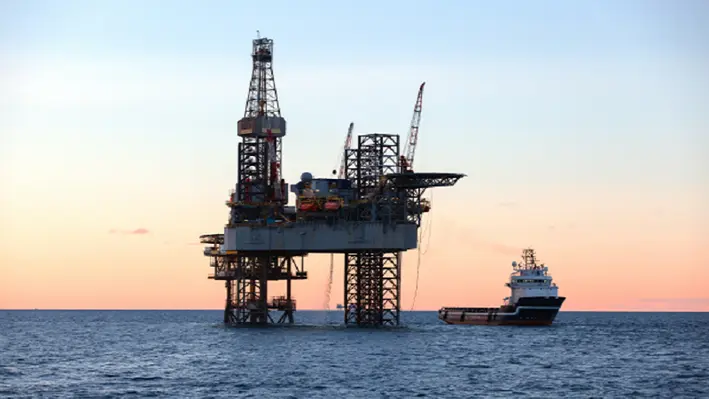

Aquaterra Energy, a leader in global offshore energy engineering solutions, has won a three-year contract with a leading UK exploration and production company to provide analysis services across the company’s offshore operations.
As per the contract, Aquaterra Energy will provide a range of offshore analysis services to deliver vital insights for the operator, enabling it to optimise its operational performance. This will include riser and conductor analysis for jack-ups and semi-submersibles alongside integrity management, decommissioning and late-life analysis.
“We’re delighted to strengthen our partnership with this customer by signing this contract,” remarked James Larnder, Managing Director of Aquaterra Energy. “We have dedicated significant time and resources to winning these long-term analysis contracts, and the success we’ve seen in this area is a testament to the first-class service delivered by our expert in-house team. To support this growth, we have doubled our analysis team over the last few years, with a focus on recruiting graduates through our award-winning graduate programme.”
Aquaterra Energy will support the operator with recommendations to manage risks and optimise offshore designs for its global portfolio across the full offshore project lifecycle, from extending or decommissioning late-life wells, to early-stage planning. In doing so, it aims to enhance performance, lower costs and support the reduction of carbon emissions from the company’s operations.
Martin Harrop, Analysis Manager at Aquaterra Energy, added, “We’re an agile, solutions-driven partner, and through these long-term agreements can provide customers with assurances and recommendations from the earliest stages of their projects – where we can provide the most value to project delivery and identifying efficiency gains. We work closely with our in-house project engineers to ensure the solutions we suggest to clients are not just what’s best from an analytical perspective, but also an engineering one, and the growth we’ve seen in this area speaks to the quality of our service.”
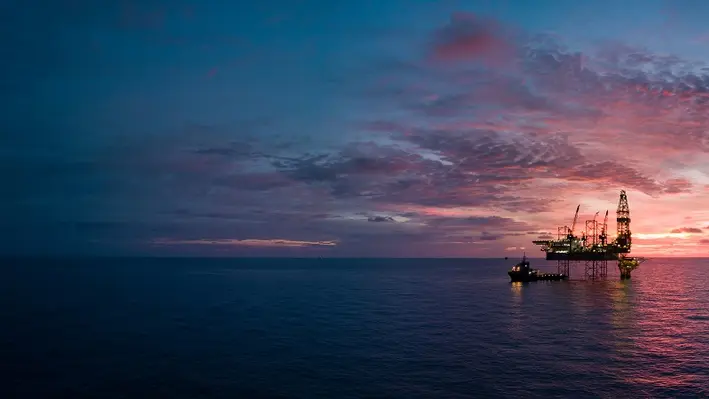

In a recent update on the SPS-88 well from the Bauna Project site in Brazil, Karoon Energy said that it will install a lightweight intervention vessel (LWIV) to start an intervention process so that the impacted well can be brought back to production.
Production from the SPS-88 well was first affected in November 2023 due to the formation of hydrates owing to an equipment failure in the gaslift dehydration unit of the floating, production, storage and offloading (FPSO) platform. Of the 12 subsea wells from the area that are joined to the Altera&Ocyan-operated FPSO via flowlines, two Patola wells were bought online last year. While the company closely worked with the FPSO operator, and had the faulty equipment successfully replaced and topsides issues resolved to remove the hydrates by circulating fluids, a mechanical blockage in the gas lift valve still obstructs the well's production capacity.
The obstruction has led the company to decide upon undertaking a 20-day intervention process by LWIV that will cost it approximately US$5-10mn. Subjected to engaging a LWIV and ancillary services and equipment, the company noted on its latest statement that this work will be initiated on the fourth quarter of 2024.
As highlighted on its statement, the intervention work will reflect on Karoon's production costs as it will swing between the range of US$10.5-15.0 per boe for the year from the previous US$9.0-14.0 per boe. While the Bauna FPSO comes with a storage capacity of 631,000 boe, the intervention plans has also led it to lower its last year production goals to stand around 9.0mn boe.
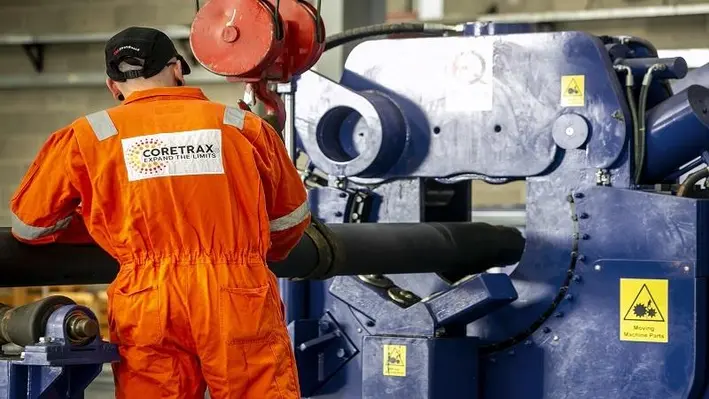
 Coretrax is set for further growth as the company has secured five multi-year contract wins for 2024 and plans to expand its footprint in the Asia Pacific region by a further 30%.
Coretrax is set for further growth as the company has secured five multi-year contract wins for 2024 and plans to expand its footprint in the Asia Pacific region by a further 30%.
The latest deals encompass key milestones including the business’ first project win in Latin America and its first expandable casing patch deployment in the UAE.
Following a string of successful geothermal and carbon capture and storage (CCS) projects, Coretrax has secured its largest geothermal contract to date – a multi-year project in Denmark where it will deliver its Origin wellbore clean up technology across 17 geothermal wells.
John Fraser, CEO of Coretrax, stated, “We have experienced a period of sustained growth and are excited to be entering 2024 with a strong pipeline of work and plans for further expansion in the coming months. Our technology spans the entire well lifecycle which means we can support operators from drilling right through to the plugging and abandonment phase.”
The company is also expected to increase its 320-strong workforce by an additional 100 personnel across its bases in Europe, the Middle East, Asia Pacific and the Americas.
“The coming 12 months will see us increase our headcount and footprint globally,” Fraser continued, “with Asia Pacific a particular focus for the business as we respond to increasing demand for our technology across countries including Australia, Brunei and Malaysia. We are also eager to extend our operations in the geothermal and CCS sectors with our circulation tools gaining a strong track record in these emerging markets.”
The contract wins come off the back of the company expanding its well intervention offering by acquiring a suite of new technology from Wireline Drilling Technologies.
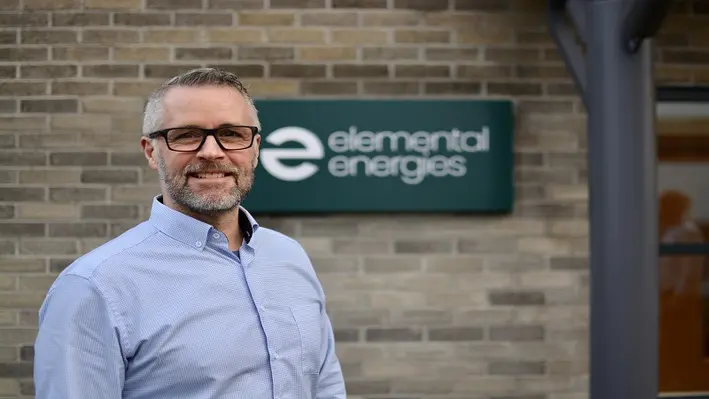
 Independent wells expert, Elemental Energies, has announced the senior appointment of Willem Boon von Ochssee as Head of Wells.
Independent wells expert, Elemental Energies, has announced the senior appointment of Willem Boon von Ochssee as Head of Wells.
The key appointment comes as the company charts a course for continued expansion in the coming year.
In his global role, Boon von Ochssee will be responsible for managing the business’ well engineering and wider technical strategy, providing expertise and oversight to projects across oil and gas, decommissioning and low carbon. With over thirty years’ industry experience, he joins Elemental Energies from Spirit Energy, where he worked as the operator’s Wells Technical Authority. He is a specialist in well engineering, project management, drilling management systems and well integrity assurance.
Mike Adams, CEO of Elemental Energies said, “Willem is recognised across the industry as a leading technical authority and is a highly respected member of the wells community. We are passionate about the role wells play in the future of the energy sector, and building a uniquely capable technical organisation is critical to that. Willem brings perspective from both the operator and supply chain viewpoint and will help to foster a strong technical culture across the business.”
Willem is a Co-Chair of the Offshore Energies UK (OEUK) licence to operate well group and is an active member on a number of cross industry committees, including the Society of Petroleum Engineers (SPE) and North Sea Transition Authority. He also plays a key role in the Net Zero Transition Centre’s Alternative Barrier Collaboration forum.
Adams continued, “Willem brings a unique commitment to supporting the wider engineering community through close links with OEUK and SPE. This dedication to supporting professional development, innovation in technology, and cross industry collaboration makes him a perfect cultural fit for us.”
Commenting on his new role, Boon von Ochssee said, “The opportunity to support, develop and manage the outstanding team here is hugely appealing. Fostering collaboration across the whole energy industry is extremely important to me and I will bring that ethos into this new role – working closely with customers to deliver a first class well management service whether for oil and gas, decommissioning or low carbon projects.”
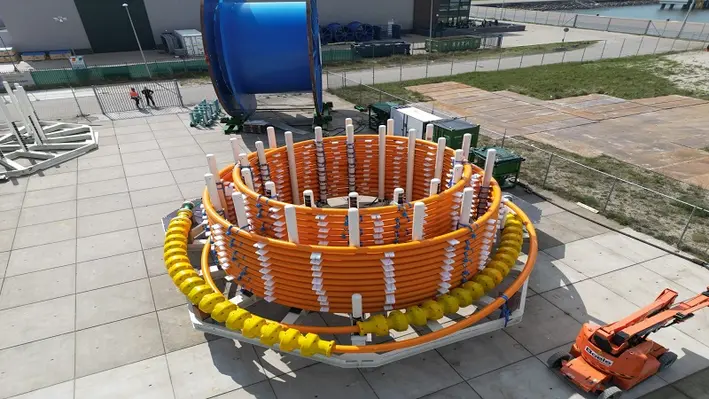
 Thermoplastic composite pipe (TCP) provider Strohm has supplied TotalEnergies with a TCP jumper, which has been commissioned for a 1,600 m deepwater project in West Africa.
Thermoplastic composite pipe (TCP) provider Strohm has supplied TotalEnergies with a TCP jumper, which has been commissioned for a 1,600 m deepwater project in West Africa.
This installation has followed a rigorous testing programme, during which TotalEnergies qualified the Netherlands-based company's TCP jumper for permanent subsea applications. All pre-deployment inspections and tests were successfully passed, certifying it for its full life cycle on schedule.
The installation of Strohm’s 5.2” ID, 340 bar design pressure TCP Jumper in the Egina field was supported by a local Nigerian subsea services provider. The pipe’s lightweight properties allowed it to be transported by a small, multi-purpose vessel and installed by local contractors, greatly reducing carbon emissions and costs. Strohm personnel were mobilised offshore to assist in the installation process.
Martin van Onna, Strohm CEO, said, “We are immensely proud to see our first TCP Jumper for our highly valued client TotalEnergies installed and operational in West Africa. This success reaffirms TCP as an ideal deepwater solution and strengthens our leading position in the market.”
Strohm’s TCP provides a robust, corrosion free and field-proven solution for operators. TCP jumpers can be manufactured and shipped in long continuous lengths, stored onsite for long periods of time, cut to length when required and terminated within hours, with no change to its properties or lifespan. TCP for subsea jumpers as well as flowlines and risers have proven to reduce the CO2 footprint of pipeline infrastructures by more than 50%.
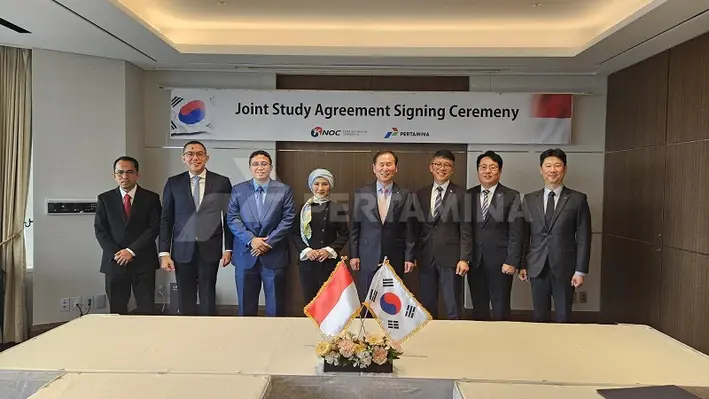

Pertamina, an Indonesia state-owned oil and gas corporation, has revealed that it is exploring Rig-to-CCS (carbon capture storage) developments with Korea National Oil Company (KNOC).
The collaboration aims to repurpose offshore oil and gas platforms into CCS facilities and is being pursued through a joint study agreement. This was signed by Nicke Widyawati, President Director of Pertamina, and Dong Sub Kim, President & CEO of KNOC, in a bid to reduce emission and support net zero commitments.
“I highly appreciate this collaboration. Apart from enriching CCS studies, this collaboration also helps address Indonesia's challenges regarding abandonment and site restoration (ASR) of offshore platforms,” remarked Widyawati.
“The cost of conventional ASR or decommissioning is extremely high, necessitating an alternative ASR solution, especially reutilisation, in order to ensure the gradual and efficient implementation of ASR for these offshore platforms.”
Oki Muraza, the Senior Vice President of Research and Technology Innovation of Pertamina, added, “This collaboration could be extended to the development of Rig-to-Wind Farm, Rig-to-Fish-Farm, and Rig-to-LNG Terminal to transport natural gas to locations where energy facilities are yet to be established.”
Many companies are seeking to address the decommissioning challenge which is increasing in urgency. Click here to discover Offshore Network's unique report on the global decommissioning outlook.
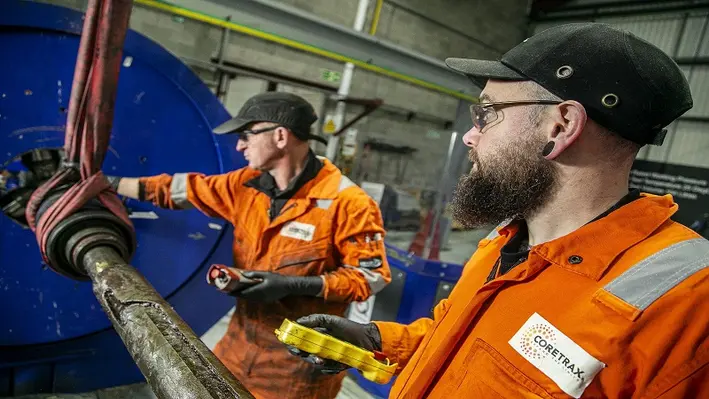

Well integrity and production optimisation specialist Coretrax has strengthened its portfolio after acquiring a complementary suite of well intervention technology from Wireline Drilling Technologies.
The significant investment has expanded Coretrax’s offering. Since completing the acquisition, the firm has signed a global route to market agreement with a supermajor to support its well intervention requirements internationally and secured additional work in the Middle East with an existing client.
The company has already integrated the new assets and software, which include wireline pump units, drilling units and tractor modules into its existing technology portfolio. The additional equipment boosts Coretrax’s current well integrity offering, enabling the business to access and address damaged wellbores, and support highly deviated wells more efficiently.
John Fraser, CEO at Coretrax, said, “This investment demonstrates our continued drive to enhance and improve our services, positioning Coretrax as a full turnkey solution for
all wellbore entry and remediation operations. The additional technologies have integrated seamlessly into our portfolio of tools and are supporting several new contracts including a global supermajor and an ongoing long-term project in the Middle East.
“As the industry remains focused on extracting maximum recovery from existing wells, demand for wireline applications has increased as operators realise the cost and sustainability
benefits they bring across well intervention, frac plug drilling, well conveyancing and lateral drilling. Our recent investment will undoubtedly open up new markets for the business and we are excited about the opportunities this will bring.”
Page 53 of 111